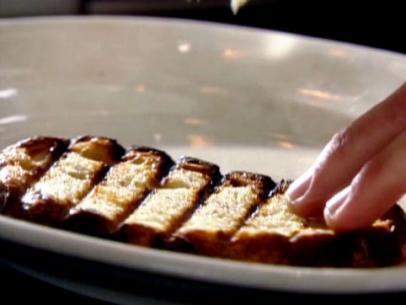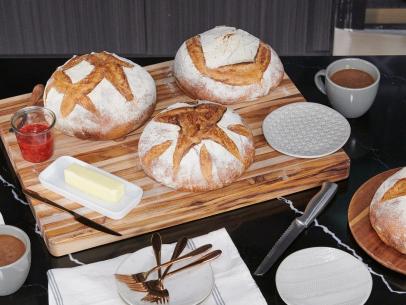
- Level: Intermediate
- Total: 9 hr (not including starter fermentation time)
- Active: 40 min
- Yield: 4 Belgian waffles
-
- Nutritional Analysis
- Per Serving
- Serving Size
- 1 of 4 servings
- Calories
- 529
- Total Fat
- 16 g
- Saturated Fat
- 9 g
- Carbohydrates
- 82 g
- Dietary Fiber
- 3 g
- Sugar
- 7 g
- Protein
- 14 g
- Cholesterol
- 83 mg
- Sodium
- 519 mg
- Level: Intermediate
- Total: 9 hr (not including starter fermentation time)
- Active: 40 min
- Yield: 4 Belgian waffles
-
- Nutritional Analysis
- Per Serving
- Serving Size
- 1 of 4 servings
- Calories
- 529
- Total Fat
- 16 g
- Saturated Fat
- 9 g
- Carbohydrates
- 82 g
- Dietary Fiber
- 3 g
- Sugar
- 7 g
- Protein
- 14 g
- Cholesterol
- 83 mg
- Sodium
- 519 mg
Ingredients
To Begin:
For Daily Feeding:
Directions
Special equipment:
scale with tare function; quart-sized, wide-mouthed glass jars with lids; hand mixer; Belgian waffle iron- Combine the starter, milk and flour in a medium bowl and cover with plastic wrap. Rest for 8 hours at room temperature, until the batter is light, full of bubbles, and roughly doubled in size. (If you'd like to make these for breakfast, you can refrigerate the batter overnight after this 8-hour rest.)
- Stir the egg yolk, butter, sugar and salt into the starter mixture until just combined and set aside.
- Beat the egg white and cream of tartar with a hand mixer on high until stiff peaks form, about 1 to 2 minutes, then fold the egg white into the batter using as few folds as possible to keep it from deflating (see Cook's Note). Rest the batter at room temperature for 20 minutes.
- Heat a Belgian waffle iron on medium heat. When hot, lightly coat both plates with nonstick spray. Ladle the recommended amount of waffle batter onto the iron according to the manufacturer's recommendations and cook until crisp and golden brown. Serve immediately or cool on a rack and wrap in plastic wrap followed by foil and freeze for up to 3 months.
For Daily Feeding:
- To begin: Mix together 125 grams flour and 125 grams water with a clean hand in a medium glass bowl. Cover the bowl with a tea towel and let sit undisturbed at room temperature until the mixture is full of bubbles and has nearly doubled in size, usually 2 to 3 days. During this time, yeasts and bacteria from the air and from the flour and probably from you will set up housekeeping in the bowl (see Cook's Note).
- For daily feeding: Peel back any crust that may have formed and transfer 20% of the culture (50 grams) to a clean, wide-mouthed jar. Stir in 100 grams flour and 100 grams water, loosely screw on the lid and stash at room temperature for 24 hours. (The culture will have a stinky-sour smell at this point.) Discard the rest of the original mixture.
- Repeat step 2 every 24 hours for 5 days. By then the culture should smell yeasty-sweet-sour, which means you're ready to put the starter to work. The waffles are to be made with the discarded percentage of starter.
Cook’s Note
If your culture isn't showing signs of life after 3 days, go ahead and start feeding. If, after a few more days, nothing happens, start over and place the culture in a different part of your home. We're not saying a stand mixer wouldn't work, but given the volume, an electric hand mixer is easier. If you don't have one, you can certainly use a hand whisk, but it's going to take some elbow grease and a couple minutes more to reach stiff peaks.

































